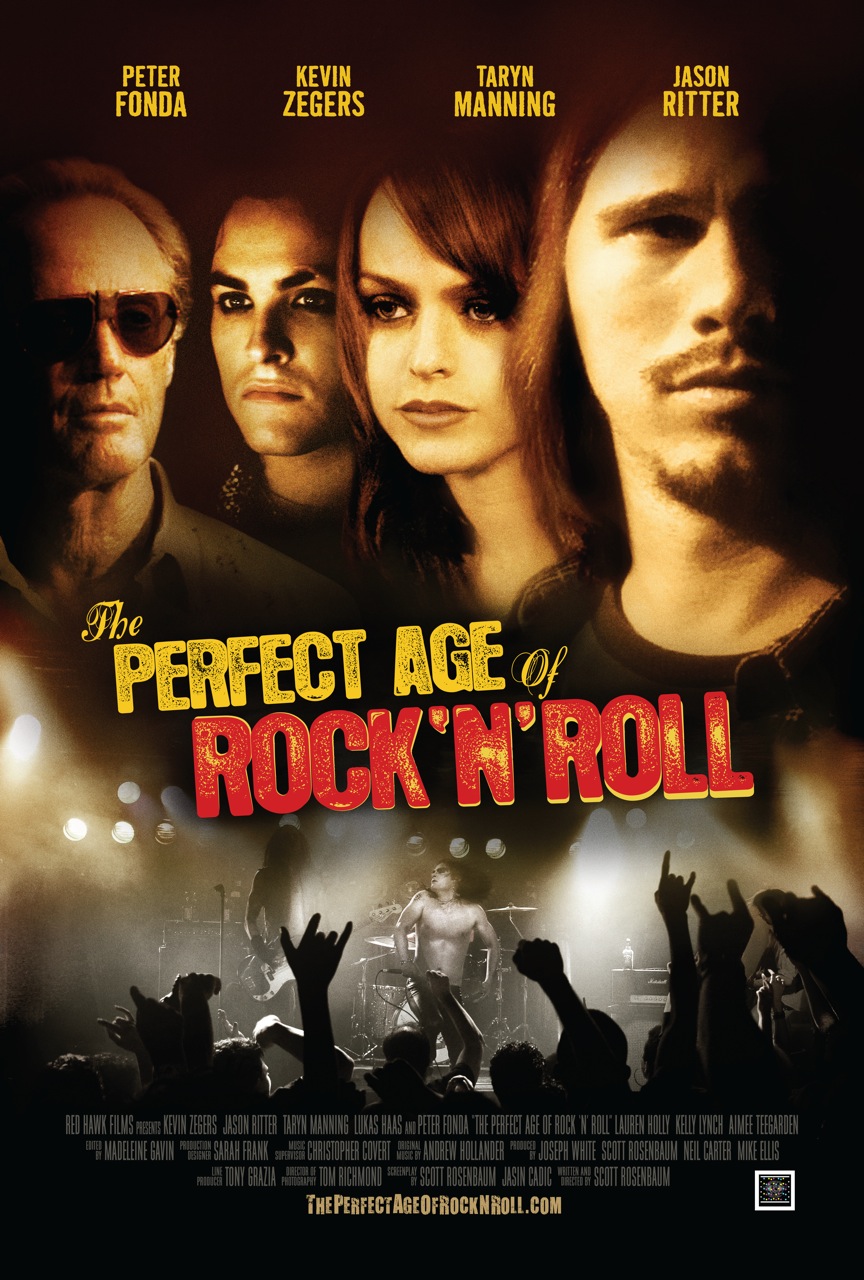By Peter Broderick
HopeForFilm has had the pleasure of hosting several of Peter Broderick’s prior newsletters, but today’s is extra-special, working as a continuation of Jennifer Fox’s illuminating posts on MY REINCARNATION crowdfunding campaign. My filmmakers mistakenly think of the crowdfunding platforms for financial purposes, but as Peter points out, it works to build community, involve audiences, and generate publicity and a true sense of ownership.
MY REINCARNATION shows how a well-executed crowdfunding campaign can be used to maximize distribution. In addition to enabling the funding of the theatrical rollout, the campaign increased awareness among core audiences, generated substantial press coverage, and facilitated partnerships.
I’ve known and admired the film’s director Jennifer Fox for many years, and consulted with her on the distribution of her remarkable series, FLYING: CONFESSIONS OF A FREE WOMAN. As tenacious as she is talented, Jennifer has learned, during more than 30 years of independent filmmaking, that it’s “change or die.” After exhausting every familiar fundraising route from grants to pre-sales for MY REINCARNATION, she tried crowdfunding as a last resort.
Filmed over twenty years, MY REINCARNATION is a documentary about her teacher, the Tibetan-trained Buddhist master Chögyal Namkhai Norbu and “his Italian born son who refuses to accept the destiny he inherited from birth.” Although the film was technically completed and being shown at international festivals, Jennifer still needed $100,000 to pay the bills she’d amassed finishing the film after a producer defaulted on that amount.

MY REINCARNATION became a crowdfunding milestone. Through a 90-day campaign, Jennifer and her team raised $150,456, three times the official goal of $50,000. 518 backers gave an average donation of $290, more than any film had ever averaged on her crowdfunding platform, Kickstarter. The average was so high for two reasons. The film attracted two associate producers at $10,000 each (one of which was a group of 50 people living in China). The campaign also offered valuable one-of-a-kind rewards, such as a hand-painted Tibetan chest and a unique statue of the deity Vajrapan, which were available to contributors who gave between $2,500 and $7,500. Contributions were received from 32 countries and more than two-thirds of the money came from abroad.
There is much to be learned from this crowdfunding success. Jennifer contributed seven articles to Ted Hope’s Indiewire blog detailing her 42 crowdfunding tips. They should be required reading for anyone planning a serious crowdfunding campaign. Here are two of the essential lessons:
==> Build a strong team that can put in the necessary time and effort. While filmmakers should be centrally involved in a crowdfunding campaign, they need a substantial amount of help to maximize the effort. Jennifer spent 50% of her time on the 90-day campaign. She had three teammates – a staff member who spent 50% of her time on the effort and two part-time women (compensated by a percentage of the money raised). They handled key tasks including adding fresh content to the website, managing outreach to organizations, and expanding the mailing list.
==> Make a detailed budget for the campaign. This should include the site fee (Kickstarter charges 5% if you meet your goal, IndieGoGo charges 4% if you meet your goal and 9% if you don’t); the payment processing fee (3-5%); the cost of creating, acquiring, and shipping rewards; and any staffing fees. There are also likely to be some defaults in contributors’ payments (Jennifer’s were 2%). If you use a fiscal sponsor, which allows donations to be tax-deductible, there will be an additional fee of 5-7% (IndieGoGo waives its fee if you use one of its partner fiscal sponsors). Jennifer estimates that the total costs of her campaign will be between 20 and 25% of the money raised. It would have been higher if she had been compensated for the enormous amount of time she devoted to the campaign.
MY REINCARNATION is now playing in theaters around the U.S. It opened theatrically in New York City in October, five months after the crowdfunding campaign concluded in late May. It has already been shown or booked in 40 theaters, and was in its seventh week in New York when this went to press. It will surely play 60-70 cities through next April and Jennifer is hoping to reach 100. Erin Owens of Long Shot Factory is booking the film theatrically.
The crowdfunding campaign of MY REINCARNATION facilitated its distribution in ten key ways. The campaign enabled Jennifer’s team to:
==> 1- BUILD AWARENESS AMONG CORE AUDIENCES. Jennifer believes the key to Kickstarter success is a strong, reachable core audience. MY REINCARNATION has two sets of core audiences. One is centered on Namkhai Norbu’s 8,000+ students around the world (they are connected via a listserv and many also meet in local groups). This audience also includes other Buddhists, as well as spiritual, new age, and yoga groups. The second core audience is centered on Jennifer’s fans and supporters, who she has nurtured over many years and films. This audience also includes documentary lovers and independent filmmakers.
==> 2 – GROW A NETWORK OF SUPPORT. This network consisted of all of the contributors to the Kickstarter campaign plus people who were unable to help financially but contributed their time and effort. These supporters helped by blogging and eblasting. The most active ones were recognized online on the Donors Wall and onscreen in the film’s end credits.
==> 3 – ACCELERATE EFFORTS TO BUILD PARTNERSHIPS. Jennifer explained that the crowdfunding campaign “got us into outreach mode early.” Her team made a major effort to develop partnerships with organizations, including Tibet House and the Tibet Fund.
==> 4 – GENERATE SIGNIFICANT PRESS COVERAGE. During the campaign Jennifer shared her crowdfunding tips in her seven-part series. When the campaign ended with such spectacular results, she and her teammates widely distributed a press release and got significant coverage. Jennifer also wrote an article for The Huffington Post.
==> 5 – EXPAND AND REFINE THEIR MAILING LIST. Over the years Jennifer had developed a personal mailing list of 6000 names. Her team worked hard to expand this list of individuals and organizations, starting with California and New York and then moving on to other states. Jennifer’s list has now grown to almost 10,000 names.
==> 6 – IMPROVE THE FILM’S ONLINE PRESENCE. The team started with a solid website which they expanded with fresh content and videos, including outtakes of the film. They utilized user-contributed content through the website’s “share your story” section. They also made excellent use of the film’s Facebook page, which attracted many people from around the world.
==> 7 – RELEASE THE FILM THEATRICALLY. $15,000 from the crowdfunding revenues seeded the theatrical rollout. Jennifer harnessed the excitement created by the Kickstarter results to find the additional money needed for theatrical from a combination of donors and loans.
==> 8 – BOOST INTEREST AMONG DISTRIBUTORS. Erin from Long Shot Factory explained that many of the exhibitors she approached were already aware of the film. She cited the Kickstarter results to show that there was already an audience for the film. The crowdfunding success also helped get the attention of festival programmers.
==> 9 – STIMULATE SEMI-THEATRICAL AND EDUCATIONAL DISTRIBUTION. Following theatrical, MY REINCARNATION will have a strong semi-theatrical release during which nonprofits and universities will arrange special event screenings. Jennifer is also perfectly positioned to do her own educational sales based on the relationships her team has built with groups and organizations.
==> 10 – FACILITATE TELEVISION, DVD, AND DIGITAL DISTRIBUTION. The increased awareness of the film will foster DVD and digital sales, as well as boost the viewership for its POV televisions premiere. The DVD, which is not yet available, is already viewed as a collectible.
As MY REINCARNATION makes clear, a successful crowdfunding effort can jumpstart a film’s distribution. It accelerates everything that will eventually be done to foster distribution, including making a trailer, reaching out to possible partners, building a network of support, generating press awareness, and refining the mailing lists and web presence. Instead of waiting until the film is nearly done and trying to do all of this in the weeks or months before its release, crowdfunding can give filmmakers a year or two head start.
A crowdfunding campaign can also provide invaluable information and feedback, enabling filmmakers to better define their core audiences, determine the best avenues to reach them, and refine the positioning of their films.
When MY REINCARNATION’S Kickstarter campaign reached a tipping point, things began to snowball. They raised $60,000 during the final five days of the campaign. Jennifer’s team has been able to maintain the momentum from the campaign into the theatrical release and should be able to continue it through the next stages of distribution.
Filmmakers should design their crowdfunding campaigns to power their distribution. While their short-term goal is to raise money, their ultimate goal should be to create a long and vibrant life for their film.
© 2011 Peter Broderick
Peter Broderick is a Distribution Strategist who helps design and implement customized plans to maximize revenues for independent films. He is also a leading advocate of crowdfunding and crowdsourcing, championing them in keynotes and presentations around the world. You can read his articles at www.peterbroderick.com




 Shruti Ganguly is currently enrolled in NYU’s dual-degree program in film production, where she will receive an M.F.A. from the Tisch School of the Arts and an M.B.A. from the Stern School of Business, with a focus on Social Innovation and Entertainment/Media/Technology. Before starting at NYU, Shruti was a producer at NYLON Magazine, heading their TV department. Shruti continues to direct and produce music and fashion videos, while running an cinema advocacy group, EchoChamber, she co-founded with her producing partner Smriti Mundhra.
Shruti Ganguly is currently enrolled in NYU’s dual-degree program in film production, where she will receive an M.F.A. from the Tisch School of the Arts and an M.B.A. from the Stern School of Business, with a focus on Social Innovation and Entertainment/Media/Technology. Before starting at NYU, Shruti was a producer at NYLON Magazine, heading their TV department. Shruti continues to direct and produce music and fashion videos, while running an cinema advocacy group, EchoChamber, she co-founded with her producing partner Smriti Mundhra.























